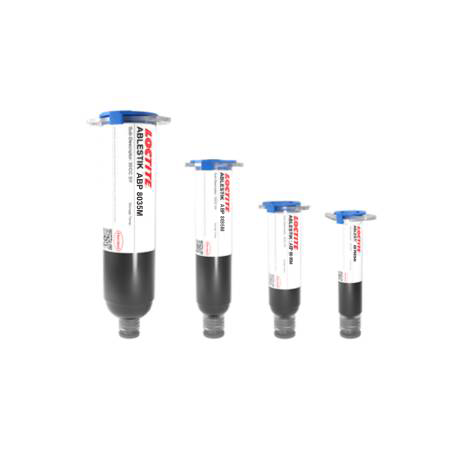LOCTITE ABLESTIK ABP 8035M
Harmonization Code : 3506.91.90.99 | Prepared glues and other prepared adhesives, not elsewhere specified or included; products suitable for use as glues or adhesives, put up for retail sale as glues or adhesives, not exceeding a net weight of 1 kg ; Adhesives based on polymers of headings 3901 to 3913 or on rubber; Other ; Other
Main features
- Clear Silicone
- High modulus at high temp
- For High brightness LED
Product Description
LOCTITE® ABLESTIK ABP 8035M is a non-conductive clear silicone designed for high brightness LED die attach applications. This silicone based product has unique properties including excellent worklife stability which ensure it can be used continuous for 24 hours pin-transfer test.
LOCTITE® ABLESTIK ABP 8035M offers low outgas ratio during cure and high adhesion strength, good thermal stability, high transparent ratio and high storage modulus properties after cure which are important for LED applications.
Cure Schedule
- 30 minutes ramp to 175ºC; hold 60 minutes
- 1 hour @ 175°C
Technical Specifications
| General Properties | |||||||||||
| Work life @25°C Work life @25°C Work life is the amount of time we have to work with a material until it is no longer able to be easily worked and applied on a substrate. It is based on the change in viscosity and it can rely on the application requirements. | 24 hours | ||||||||||
| Physical Properties | |||||||||||
| Thixotropic index Thixotropic index Thixotropic Index is a ratio of a material s viscosity at two different speeds in Ambient temperature, generally different by a factor of ten. A thixotropic material s viscosity will decrease as agitation or pressure is increased. It indicates the capability of a material to hold its shape. Mayonnaise is a great example of this. It holds its shape very well, but when a shear stress is applied, the material easily spreads. It helps in choosing a material in accordance to the application, dispense method and viscosity of a material. | 4 | ||||||||||
| Viscosity Viscosity Viscosity is a measurement of a fluid’s resistance to flow. Viscosity is commonly measured in centiPoise (cP). One cP is defined as the viscosity of water and all other viscosities are derived from this base. MPa is another common unit with a 1:1 conversion to cP. A product like honey would have a much higher viscosity -around 10,000 cPs- compared to water. As a result, honey would flow much slower out of a tipped glass than water would. The viscosity of a material can be decreased with an increase in temperature in order to better suit an application | 2,500 mPa.s | ||||||||||
| Mechanical Properties | |||||||||||
| |||||||||||




